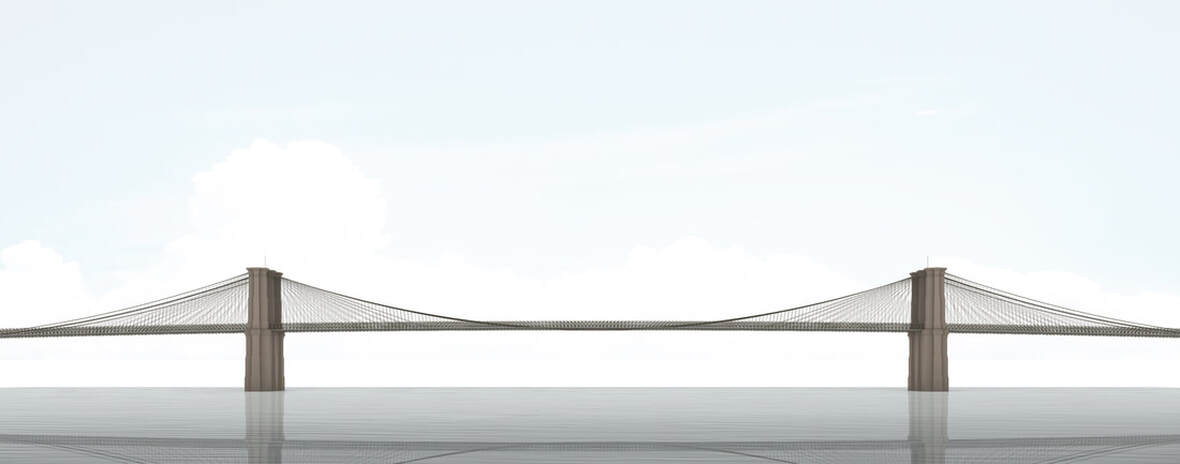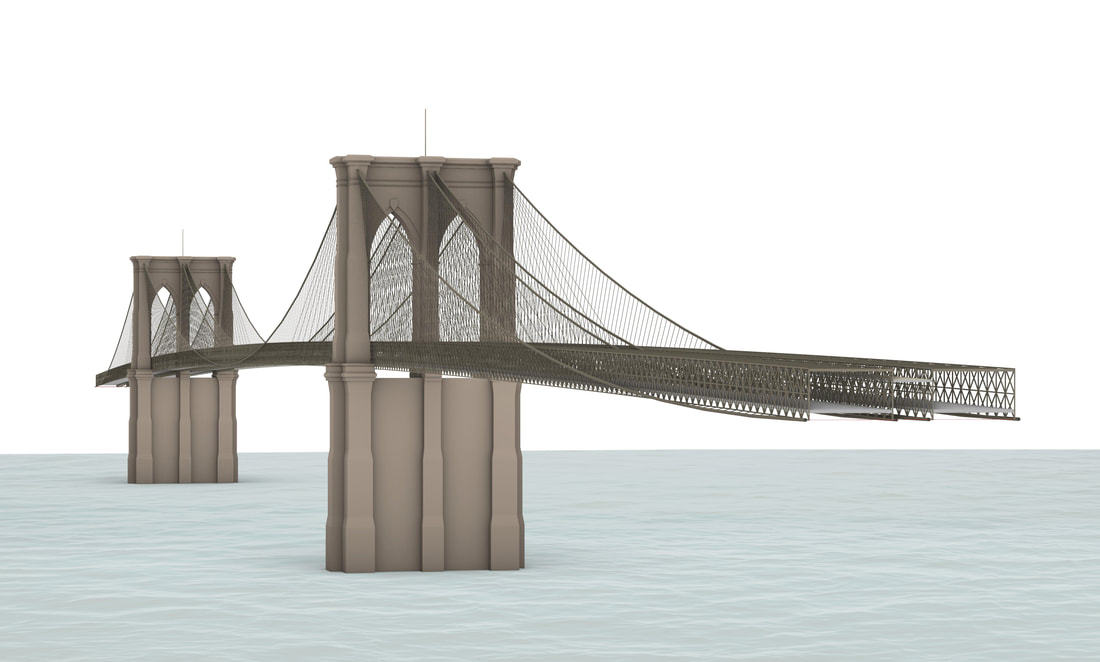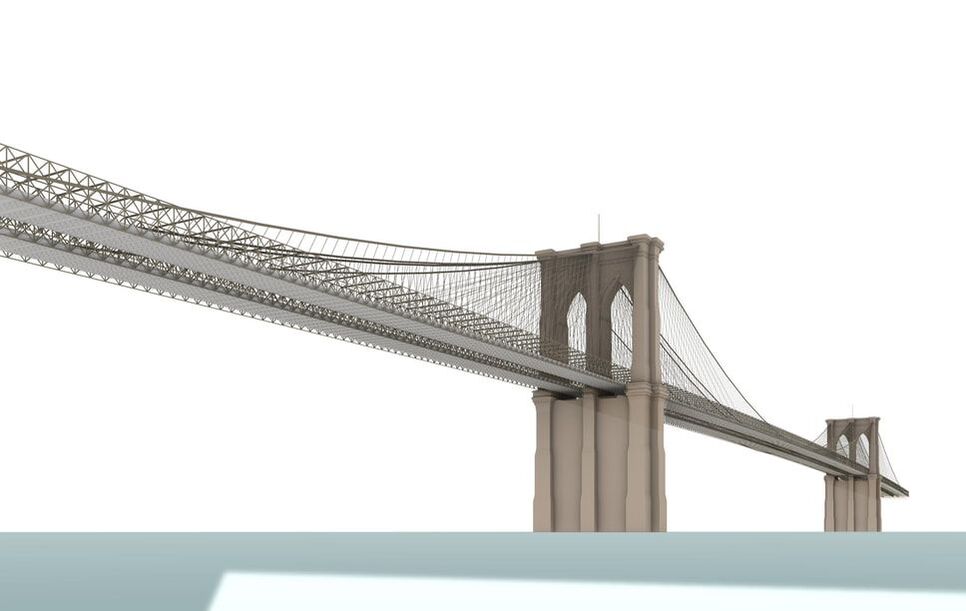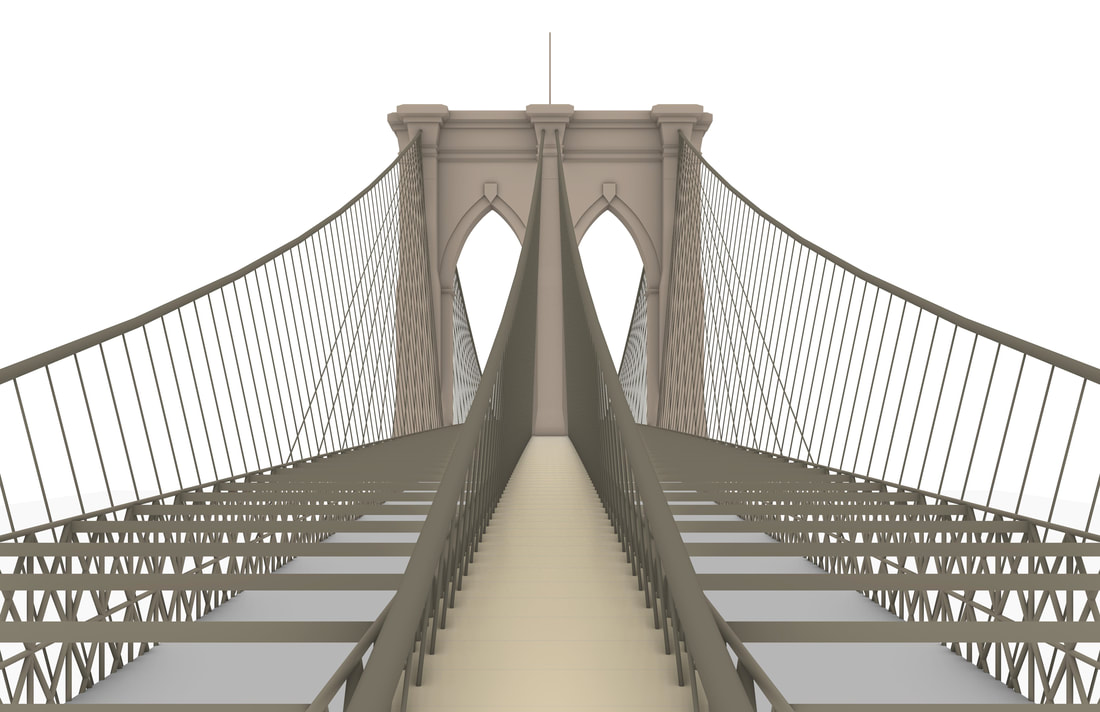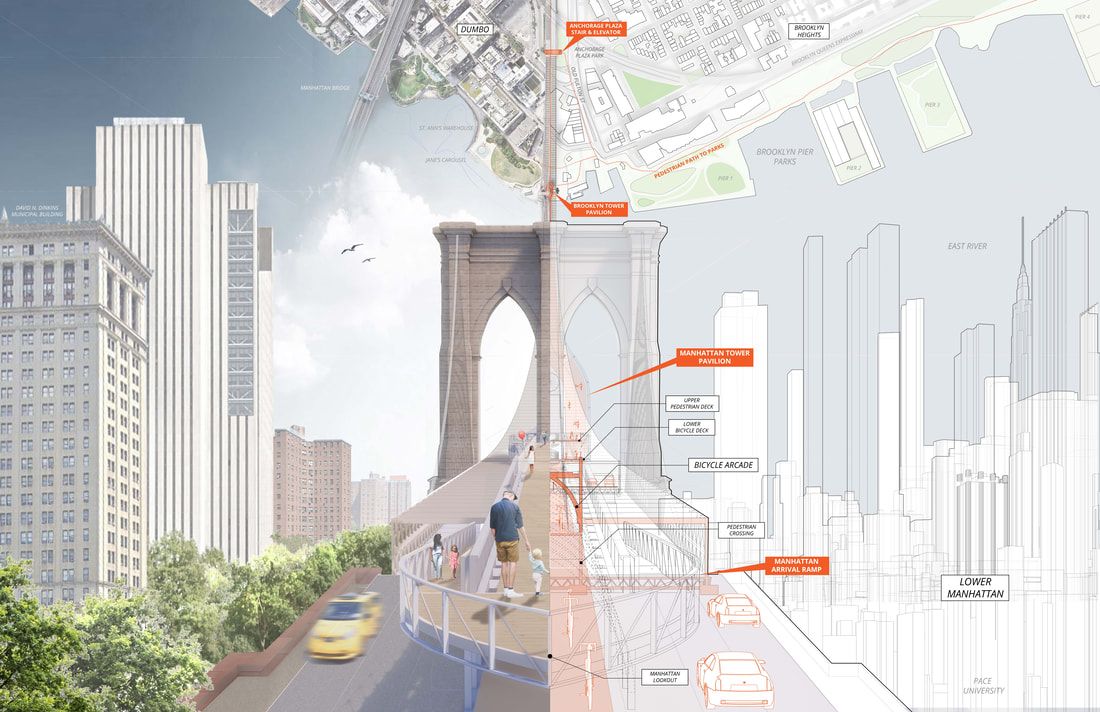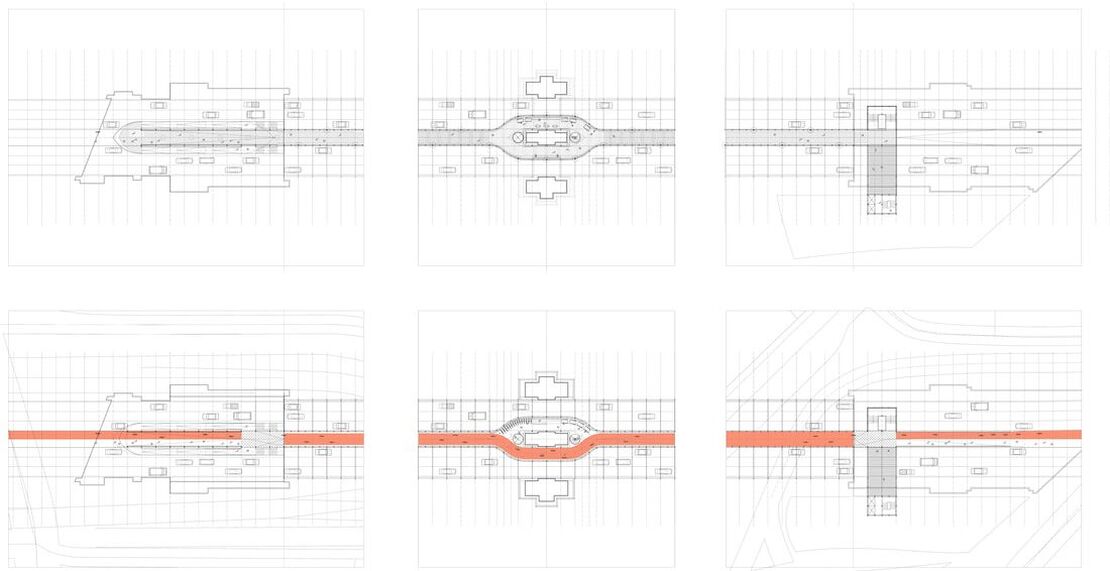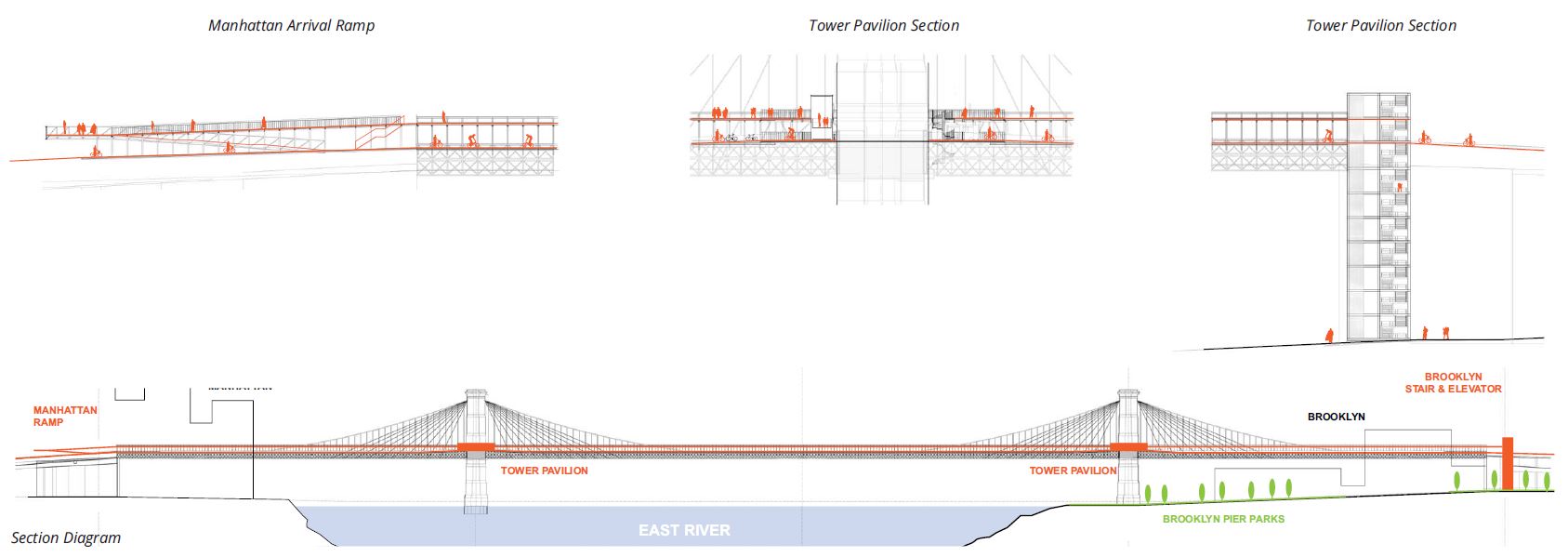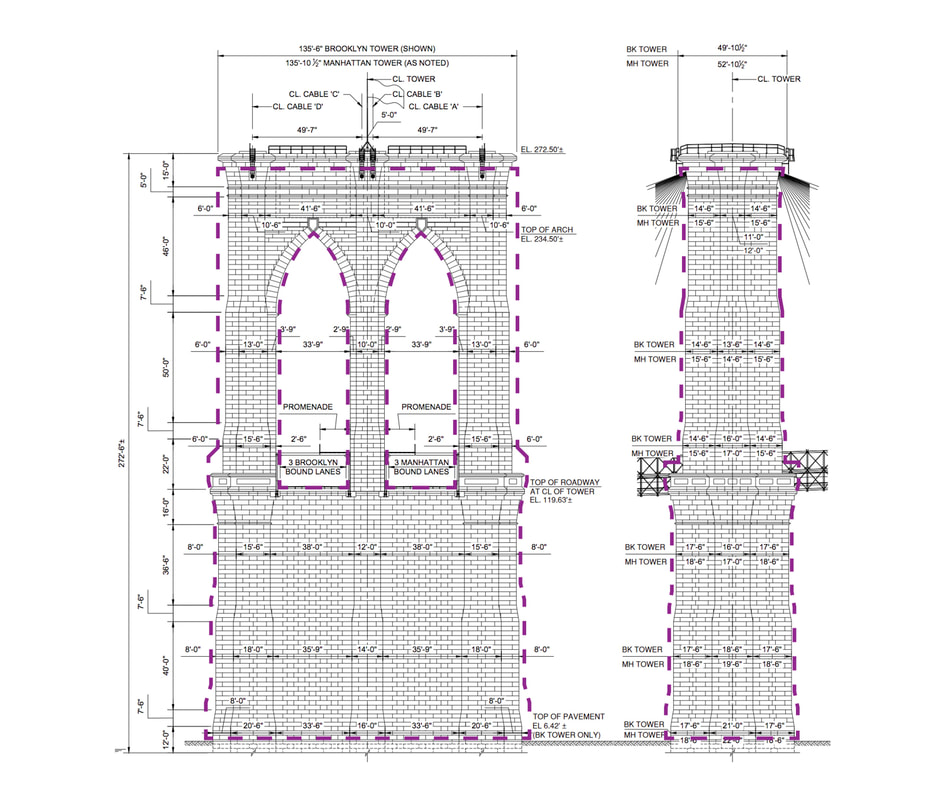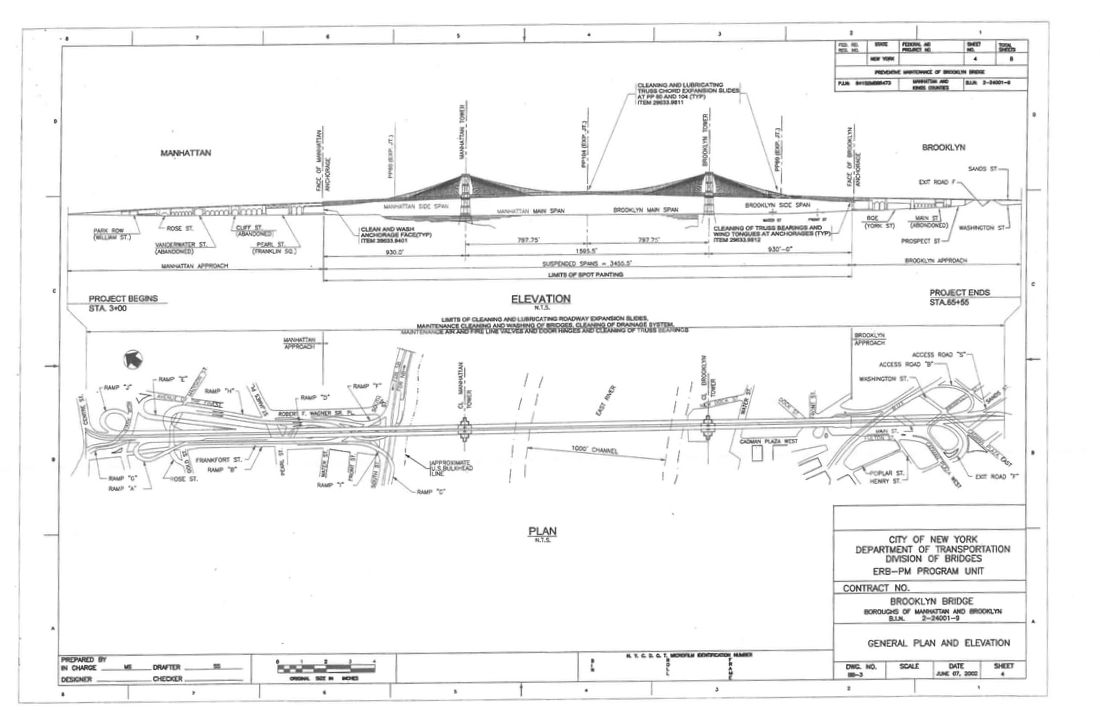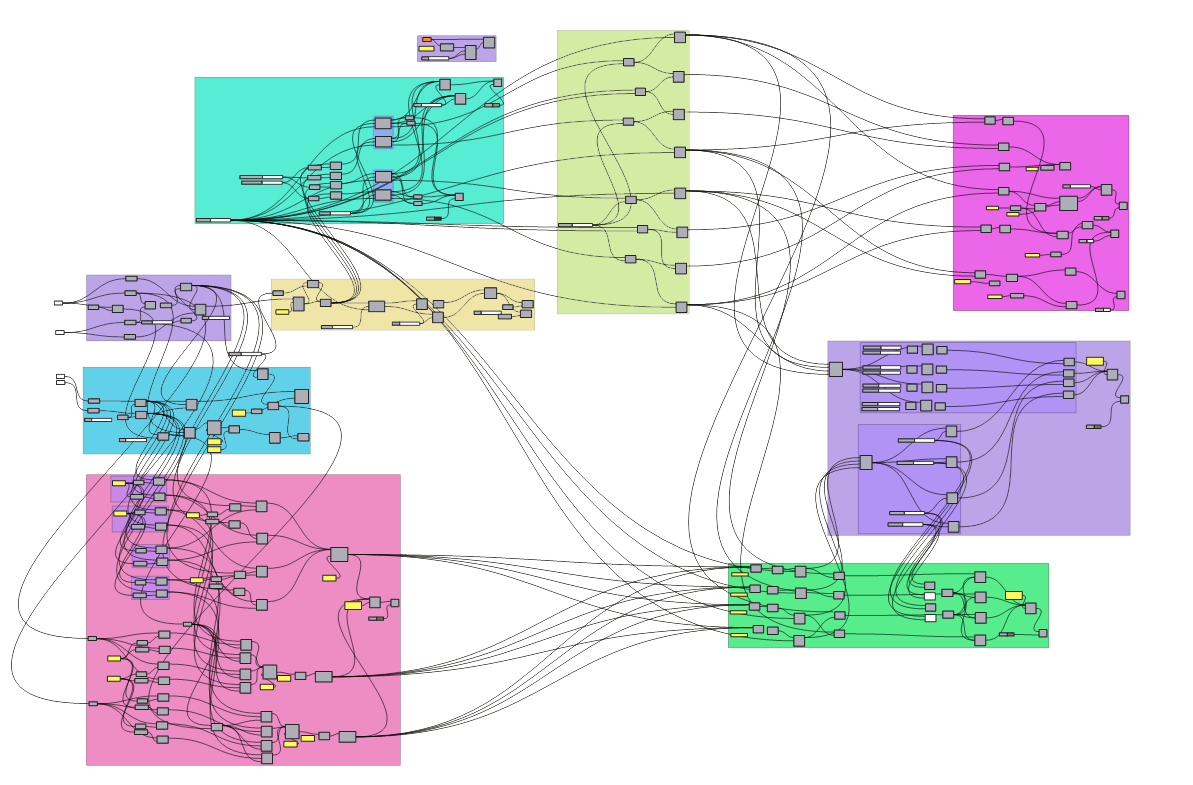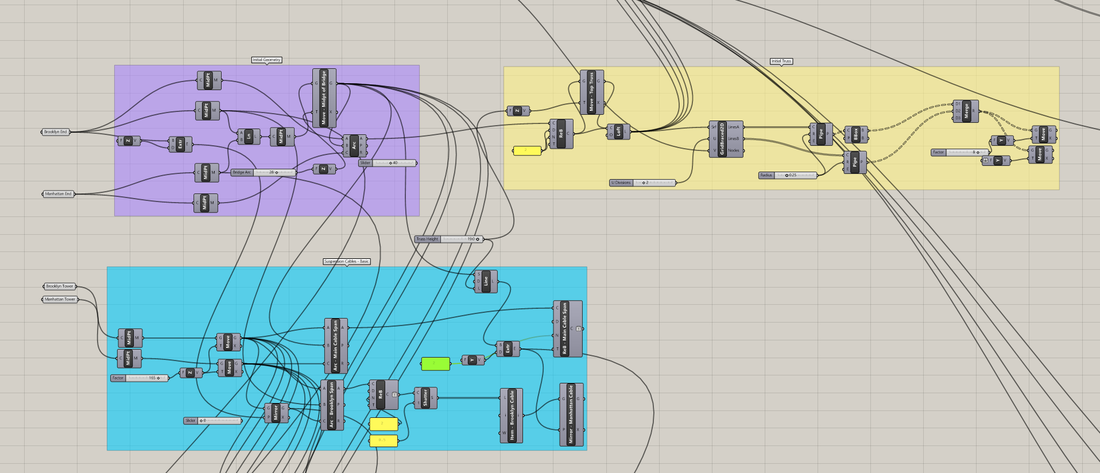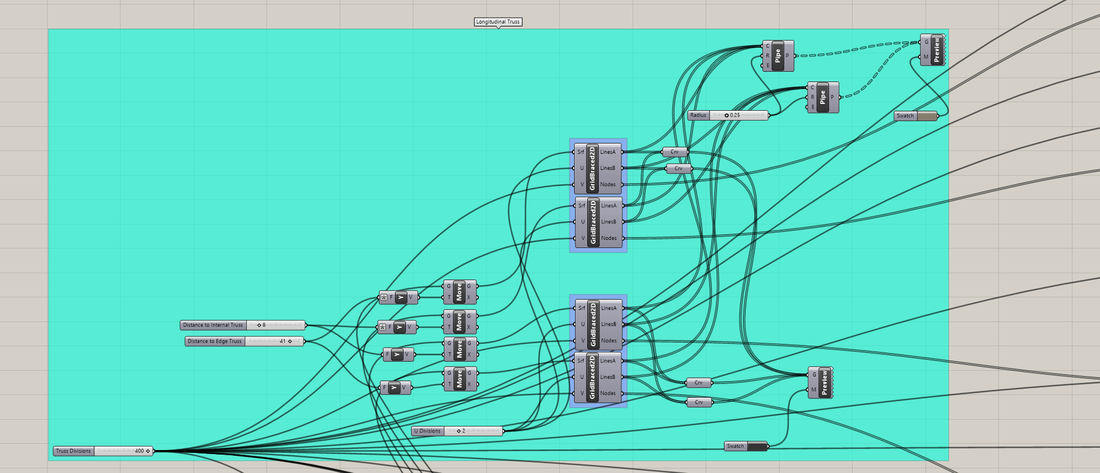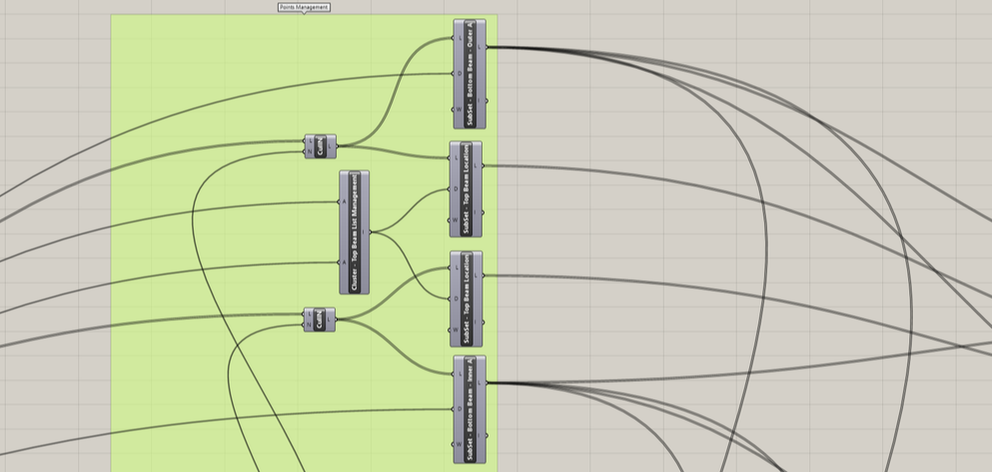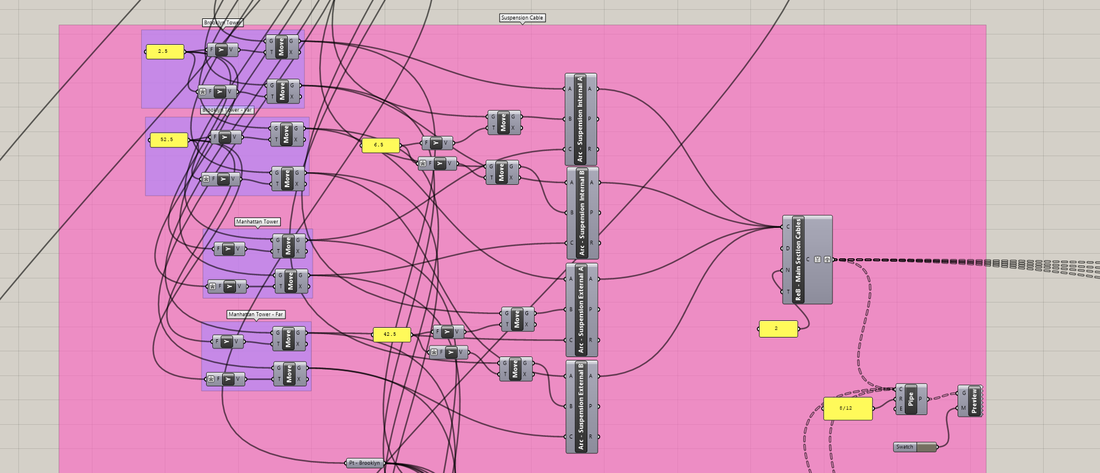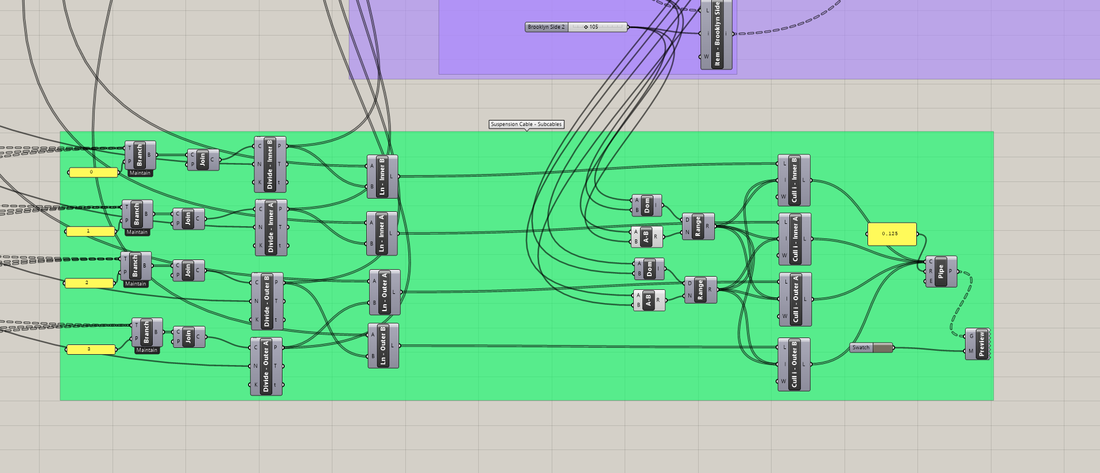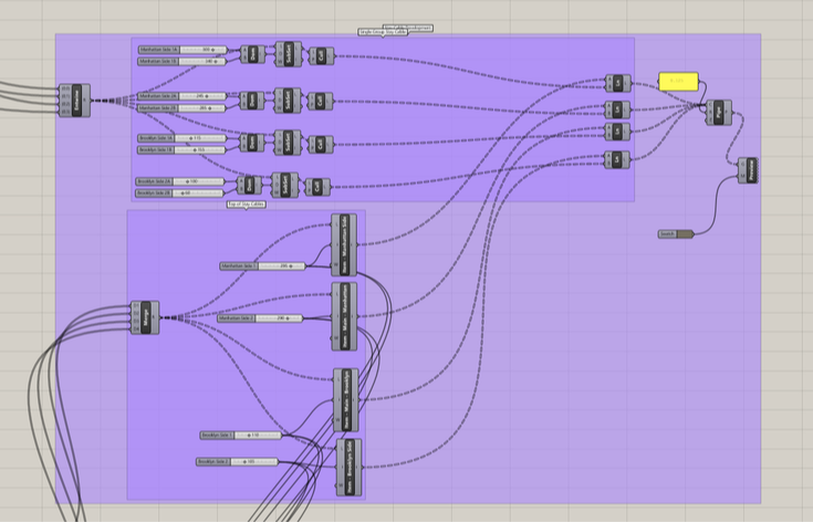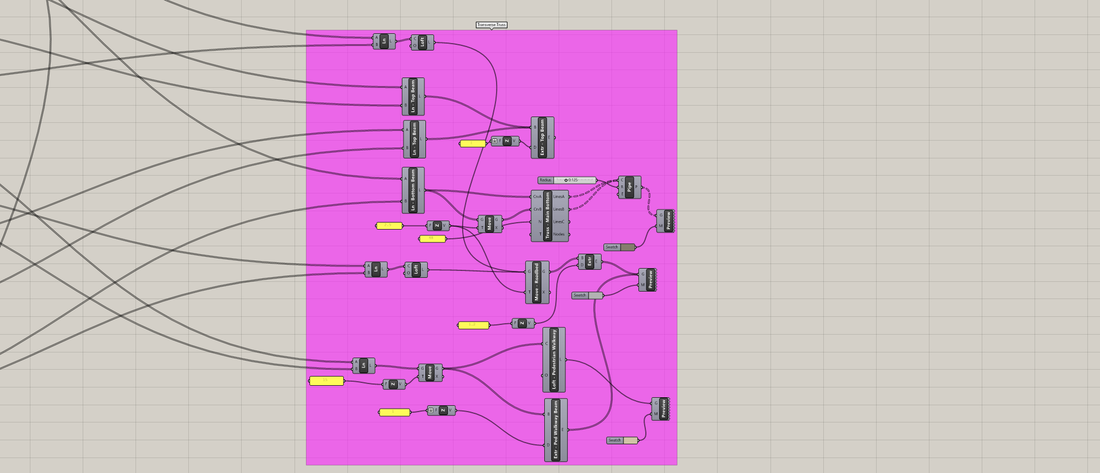|
Brooklyn Bridge, John A. Roebling and Washington Roebling, 1883
Snapshots of Scripted Bridge, 2020 Scripting the Brooklyn BridgeIndependent Study | Spring 2020
Reimagining Brooklyn Bridge Competition & Grasshopper Study Scripting Software: Grasshopper, Rhino 6, & Lunchbox Through Van Alen Institute's "Reimagining the Brooklyn Bridge" Competition, I had the opportunity to investigate the architecture of the Brooklyn Bridge. Through some in-depth documentation, from Ken Burn's America documentary to articles on the construction in Structure Magazine, I was able to reconstruct the primary components of the Brooklyn Bridge in Grasshopper. This side project, which was completed after the competition, allowed me to practice some elementary programming problems, such as organizing lists, trees, series, and comments. Grasshopper allows designers to construct simulations that are not possible through typical design software. Models can be more precise and lightweight, allowing for efficient design exploration and fabrication. Beyond Grasshopper, I believe Rhinoscript and Python will take design possibilities even further, by introducing loops, booleans, and time frames, directly into the scripting process.
PART I: THE PROPOSALBackground: Reimagining Brooklyn Bridge
Reimagining Brooklyn Bridge, Competition Cover Image, 2020
The Arcade reimagines the Brooklyn Bridge as true multimodal infrastructure. By creating a new walkway above a dedicated bikeway below, our proposal resolves the congestion of the existing promenade without widening. The Arcade also becomes a structural armature, enabling programmed pavilions at the bridge towers and new entryways at both approaches. The covered bikeway supports year-round commuting under an iconic arch roof, while the elevated deck offers new urban vistas.
The design of The Arcade enhances mobility, accessibility, and safety of the Brooklyn Bridge by introducing new ADA-accessible access points and separating pedestrians and bicyclists. The shared promenade bifurcates to two levels at each approach to the bridge. On the Manhattan approach, flanking ramps welcome pedestrians up to a new overlook and walkway while cyclists continue at level. At the Brooklyn approach, a new circulation tower with stairs and elevators allows for ground level access to Anchorage Plaza, a short walk from Brooklyn Bridge Park. The Arcade’s new approaches make ADA-accessibility the norm and provide promenade access for people who cannot walk or ride long distances. The Brooklyn approach also provides bridge access to Dumbo and Brooklyn Heights, neighborhoods currently defined but disconnected from the bridge. Collaborators: Yuting Zhang AIA LEED AP, Jensen Cheong, Hector Chang, & Raven Yan Bike Path Site Plan (Above) and Enlarged Upper and Lower Level Intervention Plans (Below)
PART II: THE SCRIPTED MODELGh Script OverviewFrom historic documents, I modeled the tower structures in Rhino and set up origin points at the Brooklyn and Manhattan ends of the bridge. Each of the masonry towers are 930 feet from the anchors, and approximately 1600 feet from each other at the main East River span. From there, I set up the four primary span cables, which suspend the two roadways from the compression towers. Due to the nature of suspension, the primary horizontal trusses supporting the roadway has a raised arc profile across the bridge's span (+30'-0" from the anchor sides). While this condition makes it difficult to model in Rhino/Sketchup, Grasshopper can handle geometric nuances well. Lunchbox's built-in truss functions allows for easy creation of the main spanning trusses. From there, list management can generate the suspension cables, stay cables, roadways, and primary bottom sectional truss.
Script Details
Final ThoughtsThis was a one-week exercise that served as a case study for Grasshopper development. The project proved that Grasshopper's strength lies in data management through lists and tree manipulation. Several potential next steps:
|

